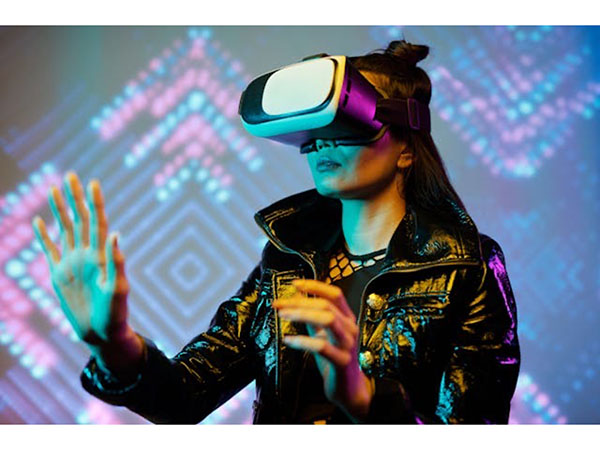News - Digital/Tech
Giving brands a voice
by Iain Akerman
July 5, 2019
.jpg) Advertisement
AdvertisementIs voice the next big thing in marketing? There are certainly those who view AI-powered voice technology as the future of brand communication, and it’s easy to see why.
According to Accenture’s 2019 Digital Consumer Survey, digital voice assistants are on track to “dictate the consumer ecosystem” in the relatively near future. The survey revealed that half of online consumers now use a voice assistant, with the UAE one of the countries leading the way in adoption and usage. There is also a “clear expectation that these devices will take on progressively complex workloads”, said the report, with voice assistants expected to manage home security and automation, pay bills, make restaurant reservations, and even provide access to virtual medical advice.
“Everyone loves that which is easier and faster,” says Tahaab Rais, regional head of strategy at FP7. “And voice is the big thing today, because it’s easier and faster. Depending on the region, voice is being used regularly by 40 to 60 per cent of consumers already, and that number will continue to grow. People prefer sending voice notes on WhatsApp versus typing messages. People prefer asking Alexa or Siri or their Smart TVs than typing. People prefer listening to audiobooks than reading.”
Writing for the Global Future Council on Consumption, Robb Henzi, head of growth strategy at Sparks & Honey, and Oliver Wright, managing director of strategy, consumer goods and services at Accenture, said that 52 per cent of consumers trust intelligent devices to shop for food, while 49 per cent trust them to shop for other items such as clothing and accessories. They also stated that voice tech-driven purchases in the UK and the US are projected to hit $40 billion by 2022, illustrating “just how much this ‘instruct’ relationship will continue to impact our everyday consumption routines”.
The repercussions for brands are obvious. AI-powered voice technology has the potential to impact every aspect of a consumer’s life and is changing the way we interact with and access digital content. It is also being used extensively to search online and to purchase goods, with e-commerce being revolutionised by voice-driven shopping. For brands and agencies alike, the question will therefore be how to effectively utilise this technology as we move towards a screen-less world.
“People prefer sending voice notes on WhatsApp versus typing messages. People prefer asking Alexa or Siri or their Smart TVs than typing. People prefer listening to audiobooks than reading.”--Tahaab Rais, regional head of strategy at FP7
“Voice is emerging as a true enabler for consumers,” says Ahmed Romoh, associate director of performance at OMD UAE. “Advancements in voice technology continue to shape consumer behaviour in the way they discover information about products or services. This drives the need for brands to adapt to this behavioural change by integrating a voice strategy focused on improving customer experience and deepening relationships. Additionally, it implicates brands to optimise the way they seamlessly communicate with their consumer and, more importantly, delivering a consistent frictionless experience.”
Rais points out that the majority of voice searches are currently via mobile, while ComScore has predicted that 50 per cent of all searches will be through voice by 2020. This is despite concerns over fraud, data collection and privacy, with Microsoft recently reporting that 41 per cent of voice assistant users are concerned about trust.
“With agencies evolving towards providing customer experience solutions in today’s increasingly personalised world, voice will play a crucial role in enhancing and enriching customer interactions in different stages of their journeys with their brands,” says Rais. “This is even more essential in the service industry.
“Advancements in voice technology continue to shape consumer behaviour in the way they discover information about products or services. This drives the need for brands to adapt to this behavioural change by integrating a voice strategy focused on improving customer experience and deepening relationships.”--Ahmed Romoh, associate director of performance at OMD UAE
“I’d love to see voice and podcasts becoming deliverables in client briefs, agency creative briefs and media plans. And in pitch presentations. I’d also love to have an award category for the same too – to encourage more work for that format and channel. Look at how that has helped with data-driven and mobile-first work across agencies.”
Jeroen Thissen, creative director at Code D’Azur, a creative digital agency based in Amsterdam, acknowledges that voice is still in its infancy. As Henzi and Wright wrote, we are still at the ‘instruct’ stage of AI-powered voice technology, whereby we can ask Alexa (Amazon’s virtual assistant) to play a specific song, order a particular item, or answer a question, but that’s it. In the future, however, voice will learn to interact (voice assistants will behave more like waiters), predict (voice-driven AI will be able to recognise your needs), empathise (technology will act as a caregiver), and finally form relationships (voice AI will become a friend or even a partner).
“Right now it can still feel like you’re talking to a baby, or a toddler, but soon that will change as data makes AI become much better,” says Thissen. “The interpretation of voice and conversation will be much smoother, which is why the potential of the medium is huge. Voice is also the most natural way of communicating.”
“The interpretation of voice and conversation will be much smoother, which is why the potential of the medium is huge. Voice is also the most natural way of communicating.”--Jeroen Thissen, creative director at Code D’Azur, Amsterdam
At present there is no real way to control audiences or messages, with voice limited almost entirely to search or voice skills on smart speakers such as Amazon Echo. However, as voice becomes increasingly embedded in the devices that we use on a daily basis, the potential is there to support customer experiences, to enhance personalisation, and to produce more insights about a consumer than ever before.
“What we want to do is try and find relevance,” says Thissen. “You always want to look for, or ask, how you can solve a real need. And that’s more of a service design question than it is an advertising question. What can I actually do to enhance my brand mission and be of service to people at the same time? Where is that sweet spot? How can I find relevance?”
Thissen cites two examples: the American Heart Association’s Alexa Skills, which allow you to perform voice prompted CPI and other first aid emergencies in real time, and Jamie Oliver’s Alexa Skill. The latter provides access to over 160 recipes with step-by-step voice instructions. Both require, and allow, your hands to be free.
“With both of these there’s a fit that makes a lot of sense,” says Thissen. “And that is the kind of service design take I have on it. A lot of brands look at voice in an advertising way – ‘what do I have to say as a brand, how can I deliver that message to people?’ And that I think is the wrong way. You have to look at it the other way around. First, you look at what people need, and then you see how you might be able to tap into that as a brand. Because the answer could also be that you can’t.
“You have to find that sweet spot where you actually add value for people and you’re able to bring it back to the brand. If you get it right, the potential is huge.”



.jpg)













